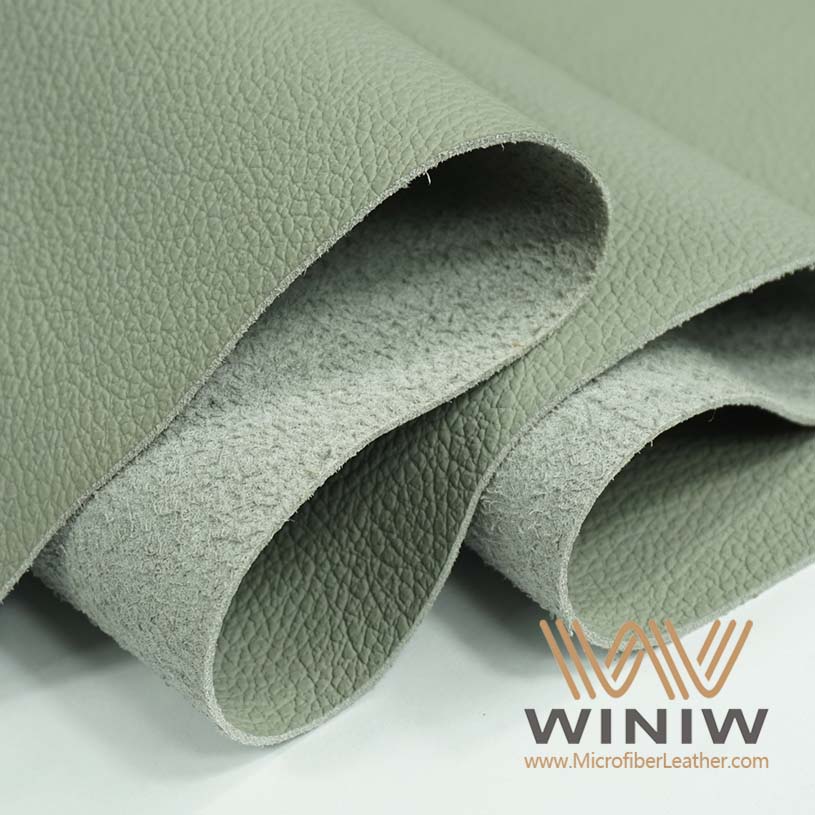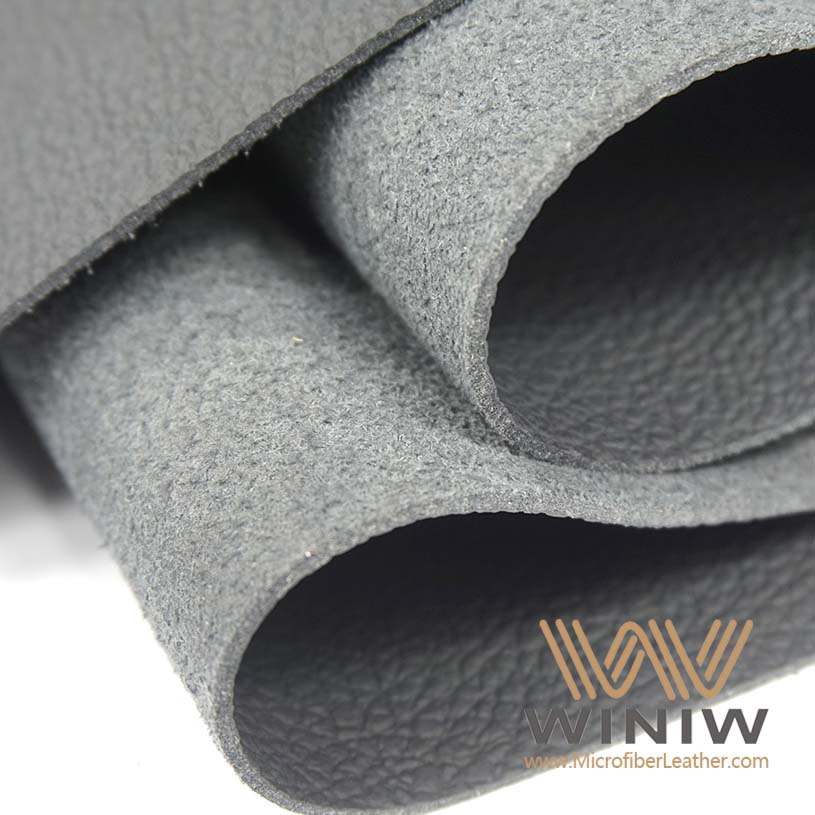
Quieres un coche impecable y sin marcas después de cada lavado. Usar un paño de cuero para coche te proporciona una alta capacidad de absorción y un tacto suave que protege la pintura. Si bien las toallas de microfibra se han popularizado por su alta capacidad de absorción, muchos conductores aún confían en la gamuza para un acabado con menos marcas.
A Gamuza de cuero para coche Absorbe el agua rápidamente y deja un acabado sin rayas, lo que lo hace ideal para secar su automóvil.
Prepara tu gamuza lavándola con jabón suave y úsala siempre húmeda para obtener mejores resultados.
Escurra periódicamente la gamuza mientras se seca para mantener su capacidad de absorción y prolongar su vida útil.

A tela de cuero para coche La gamuza, a menudo llamada gamuza, es un producto natural elaborado con piel de oveja o cordero y curtido con aceite de pescado. Notarás sus cualidades únicas al tocarla. La gamuza destaca por:
Alta capacidad de absorción, lo que le permite absorber grandes cantidades de agua rápidamente.
Textura suave y aterciopelada que se siente delicada con la pintura de tu auto.
Durabilidad, lo que significa que puedes usarlo durante años con el cuidado adecuado.
Capacidad de secar superficies sin dejar rayones ni rayas.
Una gamuza auténtica puede retener hasta 30 veces su peso en agua, lo que la convierte en una herramienta poderosa para secar su automóvil después de lavarlo.
Al usar un paño de cuero para secar el coche, obtiene varias ventajas sobre otros materiales. La gamuza absorbe el agua eficazmente, lo que permite secar el coche con menos pasadas. Esto ayuda a evitar manchas y rayas de agua, dándole a su vehículo un aspecto limpio y pulido. Muchos detallistas profesionales elogian la gamuza por su excelente capacidad de absorción y secado rápido.
Sin embargo, debes saber cómo se compara con las toallas de microfibra. Las toallas de microfibra suelen ser más suaves y absorben más agua que una gamuza. Son menos propensas a rayarse y más fáciles de mantener. Las toallas de microfibra pueden retener hasta siete veces su peso en agua, mientras que una gamuza alcanza un máximo de cuatro a cinco veces su peso cuando está seca. La microfibra también se mantiene suave y flexible, mientras que una gamuza puede endurecerse al secarse y necesita humedecerse antes de usarla.
|
Tipo de producto |
Absorbencia |
Blandura |
Durabilidad |
Impacto ambiental |
|---|---|---|---|---|
|
Paño de cuero para coche |
Hasta 30 veces el peso |
Suave, puede endurecerse |
Dura años |
Biodegradable, natural |
|
Toalla de microfibra |
Hasta 7 veces el peso |
Muy suave |
Durable |
Sintético, menos biodegradable. |
Quizás descubra que un paño para cuero de coche ofrece una opción clásica y natural para secar su coche, mientras que las toallas de microfibra ofrecen una alternativa moderna y muy eficaz. Ambas son importantes para el cuidado del coche, pero comprender sus diferencias le ayudará a elegir la herramienta que mejor se adapte a sus necesidades.
Antes de comenzar a secar su automóvil, debe prepararlo tela de gamuza Una gamuza auténtica requiere un cuidado especial para mantener su excelente capacidad de absorción y su suavidad con la pintura. Siga estos pasos para un secado óptimo:
Lave la gamuza con agua tibia y un jabón suave especial para coches. Evite jabones desengrasantes, productos químicos agresivos, lejía, amoníaco o detergente para ropa.
Enjuague bien la gamuza con agua limpia y escúrrala completamente.
Reemplace el agua de enjuague y repita el lavado y enjuague hasta que el agua salga clara, libre de cualquier tinte amarillo.
Use la gamuza inmediatamente para secarla o cuélguela a la sombra. Nunca la exponga a la luz solar directa.
Consejo: Humedezca y escurra siempre la gamuza antes de usarla. Una gamuza húmeda es más eficaz para secar coches y evita que el material se endurezca o se quebra.
Las técnicas adecuadas de lavado de autos garantizan un acabado impecable. Es importante eliminar la mayor cantidad posible de suciedad y residuos antes del proceso de secado. Este paso protege la pintura del auto y garantiza que la gamuza brille sin dejar marcas.
Lave su automóvil a la sombra para evitar manchas de agua.
Utilice una presión mínima y deje que el champú para automóviles haga el trabajo.
Lave cada panel con una esponja de limpieza de microfibra con movimientos circulares.
Enjuague el medio de lavado con frecuencia, idealmente después de cada panel, utilizando un método de dos baldes: uno para agua jabonosa y otro para enjuagar.
Utilice un inserto Grit Guard para liberar la suciedad de su guante de lavado y evitar volver a aplicar residuos.
Enjuague cada panel con una manguera después de fregar y luego pase a la siguiente sección.
La superficie plana y sin pelusa de una gamuza no absorbe la suciedad como una toalla de microfibra. Cualquier resto de suciedad o arenilla puede adherirse a la pintura, causando rayones y marcas de remolino. Asegúrese siempre de que su coche esté lo más limpio posible antes de comenzar el proceso de secado.

Una vez que su auto esté limpio y enjuagado, puede comenzar el proceso de secado. La gamuza seca rápidamente las superficies mojadas y deja un acabado impecable. Aquí le mostramos cómo usar una gamuza para un secado óptimo:
Coloque la gamuza húmeda sobre la superficie del coche.
Utilice un movimiento suave de barrido o secado para absorber el agua. Evite frotar en círculos, ya que puede dejar marcas.
Trabaje desde la parte superior del vehículo hacia abajo, secando cada sección metódicamente.
Para paneles grandes, doble la gamuza para aumentar su capacidad de absorción y cobertura.
Una gamuza auténtica proporciona un acabado suave con la pintura y ayuda a evitar las marcas de remolino. Su gran capacidad de absorción permite secar el coche con menos pasadas que con una toalla de microfibra.
Durante el secado, la gamuza se saturará. Para mantener su capacidad de absorción y lograr un secado óptimo, es necesario escurrirla con frecuencia.
Remoje y escurra la gamuza antes de empezar. Una gamuza húmeda es más eficaz que una seca.
Exprime la gamuza con frecuencia mientras secas cada sección. Esto mantiene la toalla absorbente y evita las marcas.
Continúe el proceso hasta que todo el automóvil esté seco.
Una gamuza bien cuidada puede durar años. Escurrirla con frecuencia durante el secado no solo mejora la absorción, sino que también prolonga su vida útil.

Una limpieza y un almacenamiento adecuados son esenciales para preservar la calidad de su gamuza. Después de cada lavado, enjuague bien la gamuza con agua fría para eliminar cualquier resto de suciedad o jabón. Evite dejarla secar bajo la luz solar directa, ya que esto puede endurecerla y agrietarla.
Guarde la gamuza en un lugar fresco y seco, alejado de la humedad y la luz solar.
Manténgalo ligeramente húmedo en un recipiente sellado para mantener su flexibilidad.
Nunca guarde la gamuza mojada al aire libre o arrugada en un cubo.
Si la gamuza se seca por completo, séquela al aire libre a la sombra y vuelva a remojarla antes del próximo uso.
|
Tarea |
Frecuencia |
Mejores prácticas |
|---|---|---|
|
Enjuagar después de usar |
Inmediatamente |
Descarga con agua fría |
|
Limpieza profunda |
Cada 10 usos |
Lavar las manos con jabón |
|
Desinfectante |
Mensual |
Remojo en vinagre blanco |
|
El secado |
Postlavado |
Planchar con toalla + secar al aire |
|
Rejuvenecimiento |
Cuando está rígido |
Tratamiento con glicerina |
Siguiendo estos pasos, garantizará que su gamuza siga siendo eficaz para secar coches y ofrezca un acabado impecable en todo momento. Un cuidado adecuado también significa que su toalla de secado durará más que muchas toallas de microfibra, lo que la convierte en una herramienta valiosa para todas las tareas de cuidado del coche.
Nota: Si nota que su gamuza pierde su capacidad de absorción o se vuelve rígida, rejuvenézcala con un tratamiento de glicerina o reemplácela según sea necesario. Una toalla de microfibra de alta calidad puede servir como alternativa para limpiar o secar el coche cuando no tenga la gamuza a mano.
Con la preparación, la técnica y el cuidado adecuados, puede lograr la mejor experiencia de secado y mantener el acabado de su vehículo durante muchos años.
Para utilizar una gamuza de cuero para automóvil de manera efectiva, siga estos pasos:
Lave bien su coche.
Enjuague y escurra la gamuza.
Secar con movimientos amplios y circulares.
Escurra la humedad regularmente.
Limpie y guarde la gamuza adecuadamente.
Una preparación y una técnica adecuadas le ayudarán a conseguir un coche impecable y bien mantenido.

Debes enjuagar la gamuza después de cada uso. Límpiala a fondo cada diez usos para mantener su capacidad de absorción y evitar la acumulación de suciedad.
Sí, se puede usar una gamuza en superficies de vidrio. Deja las ventanas y los espejos limpios y sin marcas, sin rayarlos.
Remoje la gamuza en agua tibia antes de usarla.
Aplique un tratamiento de glicerina si permanece rígido.
Reemplácelo si la suavidad no regresa.

Escanear a wechat:
